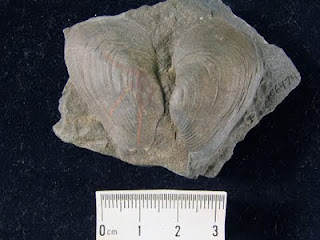At this point you are probably wondering what a blog about invertebrate fossils has to do with captioned photos of cats. Well, the idea of lolcats has spread to other animals, and following a recent article in Nature, the lolcat idea has spread all the way back to the Burgess Shale. Ed Yong, a science writer in London, has made an AnomaLOLcaris.
For those who may have a hard time reading lolspeak, this anomalocaridid is saying, "I am in your Burgess Shale, confusing your scientists." This refers to the history of the discoveries and reconstruction of Anomalocaris. Initially, the forward appendages were described as Anomalocaris - "strange shrimp" - because they were never found with heads. A round 'jellyfish'-like specimen was described as Peytoia. It wasn't until 1979 that the 'shrimp' were recognized as appendages in a paper by Derek Briggs (Palaeontology. v. 22, part 3; pp.631-664. "Anomalocaris, the largest known Cambrian arthropod"). In a 1985 paper entitled, "The largest Cambrian animal, Anomalocaris, Burgess Shale, British Columbia," (Phil. Trans. R. Soc. Lond. B v.309, pp. 569-609) Dr. Briggs and his colleague, Dr. Harry Whittington, redescribe Anomalocaris as a swimming arthropod with shrimp-like appendages at the front, and a round disc-like mouth ("Peytoia").
 |
| "Peytoia" YPM 5825 |
 |
| Anomalocaris YPM 35138 |






















